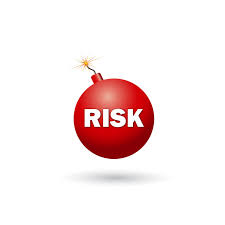If you could predict a crisis within your business before its occurrence, wouldn’t you move to prevent or reduce its impact? Making such predictions is a skill that can be developed, and here’s one method of doing so.
First let’s eliminate external risks for this conversation.
Of course, there are external risks that cannot be controlled or predicted but can be planned for as well – natural disasters, sudden political or economic events that rattle the entire economy, and more. That discussion is for a future time. Here are risks you can address.
planned for as well – natural disasters, sudden political or economic events that rattle the entire economy, and more. That discussion is for a future time. Here are risks you can address.
Here are five basic kinds of internal risks that a business faces over time.
First, there is market risk.
Will the marketplace accept your product? Is there a market for your class of product at all? Market risk is constant and should be of greatest concern to any executive or entrepreneur. Mitigating market risk is not easy. Someone within your firm must be finely attuned to the changes in the market, including subtle signs from competitors. If you are big enough to have a dedicated product manager, that person is a good candidate for this ongoing task, as is a marketing manager, who should be attuned to the changes in the environment.
Second is product risk.
Totally controllable within your organization, the quality and durability of your finished product should be at the top of someone’s job description. Whether it is you or a quality control manager, someone must assure that the product or service you send out to the world will not fail to perform at least to the level of customer expectation, if not to delight those customers most likely to be critical.
Third is finance risk.
Too often the person you call your chief financial officer is trained in accounting, which is primarily a process of looking backward over events in the past. A real CFO must be one to project and plan for the future as well, aware of the need for increased cash during times of growth or market disruption, and aware of the weekly challenges of shifting cash flow. The worst thing a fragile, entrepreneurial business can endure is to run out of cash. Not only is the enterprise threatened, but confidence is shaken among employees, suppliers, even customers. Competitors have a field day when hearing about cash problems at a company; and the rumors they pass on can reverberate for months or longer after the problem is solved.
Fourth is competitive risk.
 This consists of two separate risks. First: do you have a significant barrier to entry to keep competitors from undermining your effort? And second: does a competitor have a better story and product to compete effectively against your offering? Someone within your firm must be finely attuned to the changes in the subtle signs from competitors. These include having a current knowledge of competitors’ hiring practices, pricing strategy, and more.
This consists of two separate risks. First: do you have a significant barrier to entry to keep competitors from undermining your effort? And second: does a competitor have a better story and product to compete effectively against your offering? Someone within your firm must be finely attuned to the changes in the subtle signs from competitors. These include having a current knowledge of competitors’ hiring practices, pricing strategy, and more.
Fifth is execution risk.
This falls squarely on management to perform, to take the company to and beyond profitability. It is your job to oversee the constant gathering of information, efforts to mitigate these risks, and even to hold senior level planning meetings around analyzing data and asking “what if…” questions that bring out the doomsday scenarios that could hobble your company. Once defined, the obvious next step is to role play responses to each challenge, or even to put in place preventative measures well in advance for each identified risk.
Running into one or more of these is inevitable.
When one or several of these events hit you and your team, and they certainly will someday, you’ll be better prepared to respond quickly and with a more appropriate, planned response. That will reduce the possibilities of suffering a catastrophe and will more quickly calm the many stakeholders who have reason for concern, looking to you for assurances.
Here’s your homework:
Why not plan a series of meetings with the appropriate members of your firm to discuss these challenges as you and they identify them, and prepare a plan for overcoming each? The time it takes may well be the difference between survival and doom; or it may be the plan that distances you from your competition if any of these events do occur in your mutual future.
